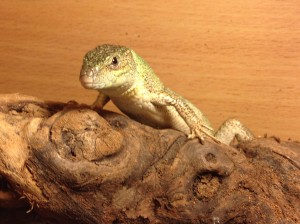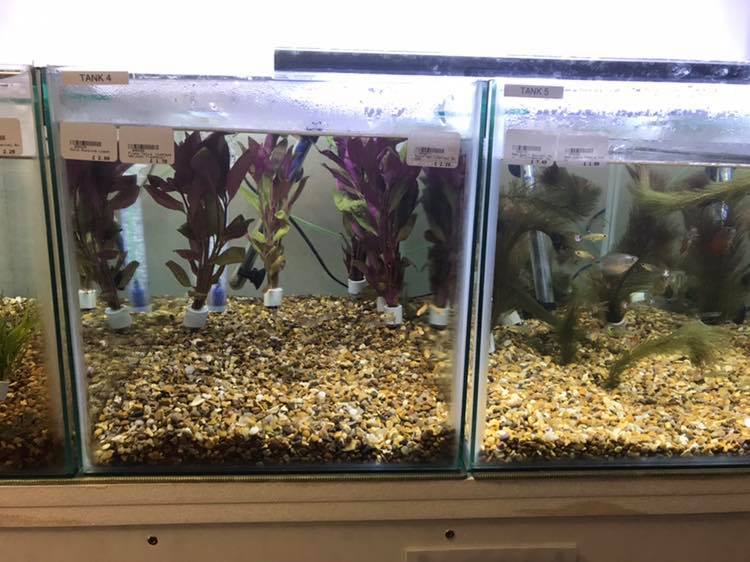Balkan green lizards (Lacerta trilineata) are part of a group of related species ranging across Europe and western Asia. The eastern lizards of this grouping are slightly larger than their western cousins and a bit bolder too. This aside, care is very similar for all species. Balkans have a reputation of being less damp tolerant than some of the other species such as Lacerta viridis.

Housing
We would not recommend keeping more than one of these lizards in an enclosure. Males will fight and females, whilst more tolerant, may do so as well unless the enclosure is quite large. Keeping a male and female together outside of breeding may also risk injury or stress to the smaller female as well, if she cannot get away from him.They have been kept together succesfully in a suitably large enclosures by experienced breeders but why take the risk? This care sheet is aimed at the beginner/intermediate keeper and does not cover keeping large breeding colonies which require very large enclosures (up to 20m2 in some cases. Green lizards can be kept outside through the summer but I am not covering that here. Needless to say cage security is a big issue with keeping them outside).
We would recommend a wooden (or glass) vivarium of around 30″ – 36″ x 18″ x 18″. You can use a smaller 15″ cross section but I just find that restricts the view and reduces the lay out a bit. I do like naturalistic, display vivs so tend toward larger vivs for display purposes.
Substrate
A variety of substrates can be used. Some people have used sand – I don’t. The risk of impaction is higher and whilst easier to seive I find it will smell dirty, quicker than other substrates. Beech chips are fine but I find them a bit utilitarian for my taste. Orchid bark chips work well (if you are worried about swallowing of bark pieces then use a coarser grade). There are several newer products coming along all the time that work really well. I like Pro Reps Tortoise life substrate for these lizards. I place some at one end of the viv and blend into orchid bark for the other two thirds, banking this up over a piece of cork bark which acts as a hide and as structure for the layout. Damp moss under the hide will produce a more humid microclimate that helps with shedding. The additional depth of orchid bark acts as an anchor for upright fake plants (Exo Terra and Komodo’s Boston Ferns for example). A few well placed rocks (I use Red Jasper) improve the look further and help keep everything in place. the Torrtoise Life encourages natural digging behaviour. You could use something like Tortoise Life (a clean, pathogen free “soil” type substrate) across the whole viv. Green lizards like to dig and burrow so make sure it has some depth to it (5cm is OK).
Lighting
Green lizards are diurnal so require UVB lighting. A 5- 6% tube or compact UVB lamp will be sufficient to ensure production of vitamin D3 and so uptake of calcium from the diet. This will avoid metabolic bone disease and some other nasties that these li\zards would otherwise be prone to.
They will also benefit from a basking spot lamp. We use one that produces some UVA light as this helps promote a natural circadian rhythm. Don’t have one that is too powerful for the size of your vivarium and ensure that the lizard cannot come into contact with the lamp (a guard may be necessary to ensure this). Incadescent lamps produce a lot of heat as well as light so (especially in a wooden vivarium that helps keep heat in) a method of ensuring that the lamp does not overheat the viv is essential. This normally means a dimming thermostat.
Heating
In addition to a basking spot lamp we use a heat mat to provide background and overnight heat although in a hot summer this can be switched off. The basking spot (on during the day) should not exceed 40C at the hottest point (a rock directly under the lamp would be good) and the cool end of the viv wants to be around 20C during most of the year. The lizards will benefit from a lowering of temperature during the winter however. If you are looking to breed this is essential to stimulate breeding behaviour in the spring. when the temperature increases again. Overnight the temperature will drop with the basking lamp switched off. This is not only acceptable but desirable to reproduce natural conditions. Around 20C at the hottest point overnight would be good. Maintaining a gradient across the viv to allow thermo regulation during the day is the key.
A thermometer is an essential piece of kit. A basic dial type is sufficient. I don’t use these. Not because they don’t work, they do but because I have a lot of vivs and that’s a lot of thermometers, I prefer to use an infra red “point and press” thermometer. More expensive if you only have one viv but cheaper if you have lots. Much more accurate too as you can take surface temperature readings at any point across the temperature gradient (hot side to cool side). If you don’t have one of these then two dial termometers, one at each end will do. Just remember that the temperature on the back wall of your viv will be less than that directly under the basking lamp so a reading of 30C is sufficient. Adjust whatever thermostat you are using to the reading you get from your thermometer and don’t worry too much about what the termostat setting says, worry about what temperature you are actually acheiving.
If using a heat mat I would, in this case, place it on the wall of the viv rather than the bottom. The substrate will be too deep and will insulate the heat mat, possibly to the point of creating a dangerously hot spot if a fault develops in the mat. If you wish to use a ceramic heat emitter instead of heat mats that would be fine but again make sure the lizard cannot touch it – they get very hot to touch.
Feeding
Green lizards are insectivores. We use a wide variety of cultivated insects. Crickets form the mainstay. They are very active and encourage natural hunting behaviour. We vary these with locusts, some morio and mealworms and occasional waxworms and fruit beetle grubs (the smallest ones we can find). Dust the insects with calcium and occasionally with vitamin powder containing D3 (We do this once a week) . Since we feed our insects throughout the week to keep them alive on our shelves for our customers, ours are gut loaded anyway so we do not have to worry about that. Just remember, whatever you feed your insects you are feeding to your lizard in the insect’s gut so you can supplement your lizard’s diet that way.
Do not use insects captured from the garden. They could carry parasites or diseases, could have been feeding on a neighbours plants that have been sprayed with something etc. I know people do it and do not have problems. However my response to this is my mother in law smokes 20 cigarettes a day and is in her eighties and in good health, However I wouldn’t recommend it to your children. Enough said.
A water dish is obviously essential. Occasionally a lizard will use it to bathe in as well as to drink. Make sure the water is changed regularly as in the warm environment bacteria will grow very quickly and these lizards do occasionally use the water bowl as a toilet!
Handling
Green lizards are fast and can be defensive. Handling is not always easy. If you lack confidence then use a glove until you gain some. It is harder to hold the lizard with a glove on but easier to catch it in the first place so I wouild recommend removing the glove once caught. Holding the lizard across its shoulders with the first two fingers and under its chest with the thumb means is cannot get away and cannot bite. Always grab the lizard near its head when catching it and NEVER grab its tail. Like a lot of lizards (although no where near all) they display caudal autonomy – the ability to “drop” the tail. This is a defence against predators. Whilst the predator (or you) are stood looking at the still wriggling tail the lizard has hot footed it to safety. Whilst in green lizards the tail does grow back it never grows back looking as good as the original and losing its tail in this way is stressful to the lizard and to you!
Disease
Green lizards can all suffer from an highly infectious disease called viral papillomata which can appear as a black growth on the skin or in the mouth. It is always fatal, although it can take years to develop. This is really a disease of wild populations and a lizard obtained from disease free captive stock will not get this condition unless intorduced to diseased individuals. My first reptiles were a pair of European Green lizards (Lacerta viridis). I obtained them seperately. The second one had the disease and subsequently both died of it. This was however, “Ahem,” over 40 years ago so both would have been wild caught individuals and these days, thanks to improvements in care, restrictons in capturing and moving wild animals and excellent breeders any you find for sale are likely to be disease and parasite free, captive bred lizards.
Cleaning
Spot clean daily – take out any poop you can see with a bit of tissue. If you do this daily and are thourough, you should only have to replace the substrate every three months or so. If you do not do this regualry then the vivarium will start to smell quite quickly and the substrate will need replacing more regularly.
After removing the substrate disinfect the vivarium with a good quality reptile disifectant. As we have a wide variety of animals (reptiles, mammals, birds) we are currently using F10 as it is safe for everything we stock (obviously not fish!!!) but there are others avaiable. Do not use household disinfectants. Many contain toxic phenols (the distinctive TCP smell you get in some famous household disinfectants).
As already mentioned, clean the water bowl regularly (daily is best but at least every two days). This should be disinfected each time as this is likely to prove the dirtiest part of the set up (everything will collect there, lizard poop, drowned crickets, bits of shed skin, bacterial scum etc).
It shouldn’t really need saying but I will say it anyway – always wash your hands after handling your lizard or anything inside the vivarium. Reptiles can carry E.coli and salmonella bacteria and you really do not want a dose of salmonella. In the weak it can be fatal but even in healthy individuals it is embarrasingly unpleasant, incredibly painful and debilitaiting. Don’t take risks, get some anti bacterial hand cleaner.
The Angell Pets Team








